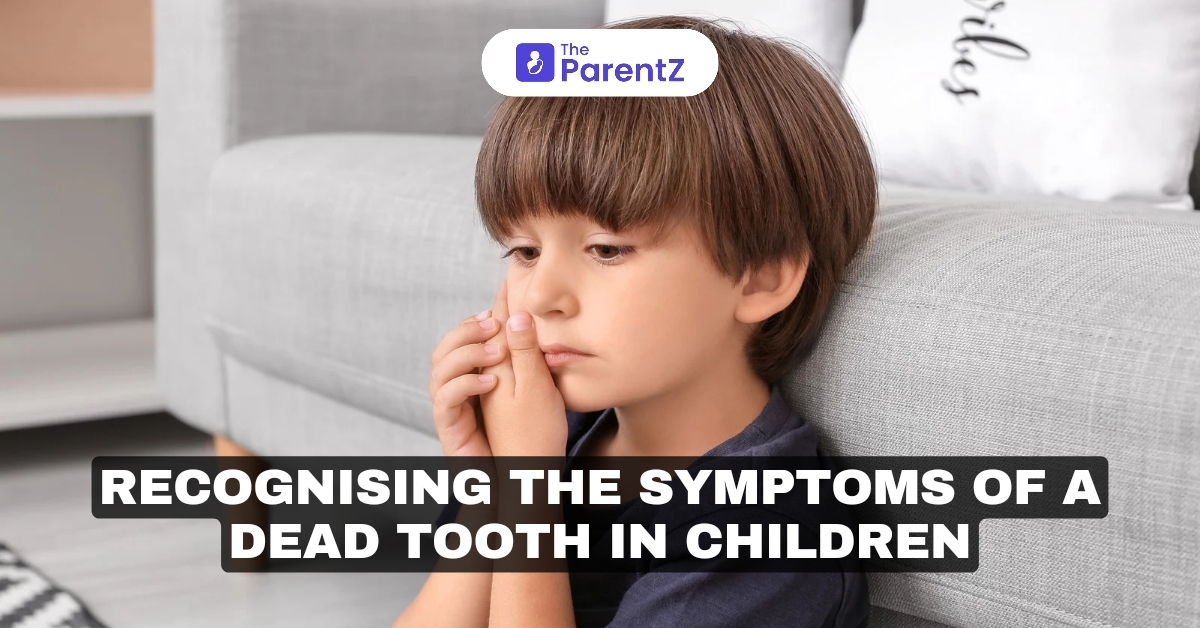As parents, ensuring the health and well-being of our children is a top priority, and their oral health is no exception. While some dental issues are easily noticed, others can go undetected until they become more serious. One such issue is a dead tooth, which can occur in both adults and children. For children, recognizing the symptoms of a dead tooth early on is crucial in preventing further complications, such as infection or damage to other teeth.
In this article, we will discuss the symptoms of a dead tooth in children, the causes behind it, and what steps parents can take if they suspect their child may have this issue. This knowledge will empower you to act swiftly and prevent further oral health problems, ensuring that your child maintains a healthy smile.
What is a Dead Tooth?
A tooth is considered “dead” or “non-vital” when the nerve inside the pulp of the tooth is damaged or dies. This usually happens due to injury or decay that affects the innermost part of the tooth. In children, a dead tooth can be especially concerning, as it may not only cause discomfort but also impact the development of their oral structures if left untreated.
The pulp, which contains blood vessels and nerves, is essential to a tooth’s vitality. When the pulp becomes damaged, the tooth loses its blood supply, which can lead to discoloration, infection, or even the need for extraction. Understanding how to identify these early warning signs in children can help prevent these consequences.
Common Causes of a Dead Tooth in Children
- Trauma or Injury:
Children are highly active and prone to accidents, especially during play or sports. A sharp blow to the mouth can cause trauma to a tooth, damaging the blood vessels inside. Even if the tooth does not immediately become discolored or painful, the internal damage may lead to the death of the tooth over time.
- Tooth Decay:
If tooth decay is not treated in its early stages, it can eventually penetrate the outer layers of the tooth and reach the pulp. Bacteria from decay can infect the pulp, leading to its death.
- Orthodontic Movement:
In some rare cases, the pressure exerted by orthodontic appliances like braces can damage a tooth’s blood supply. This may cause a tooth to die during or after treatment.
Symptoms of a Dead Tooth in Children
Parents must be vigilant in recognizing the subtle signs that may indicate a dead tooth. Some of the most common symptoms to look for include:
- Discoloration:
One of the first noticeable signs of a dead tooth is discoloration. The tooth may turn yellow, gray, or even black as it loses its vitality. This change can happen gradually and is often more noticeable in the front teeth.
- Pain or Sensitivity:
While some dead teeth are asymptomatic, others may cause discomfort. Your child may complain of pain, especially when chewing or biting down. The pain may vary in intensity, depending on whether the tooth is infected or inflamed.
- Swelling and Gum Inflammation:
If an infection has spread to the surrounding tissues, you may notice swelling, redness, or tenderness in the gums near the affected tooth. In some cases, an abscess may form, leading to more severe swelling or the appearance of a pimple-like bump on the gum.
- Bad Breath or Unpleasant Taste:
If a dead tooth becomes infected, it can emit an unpleasant odor or taste due to the accumulation of bacteria. Persistent bad breath in your child could be an indicator of an underlying dental issue.
What Should You Do If You Suspect a Dead Tooth?
If you observe any of the symptoms mentioned above, it’s important to schedule an appointment with a dentist promptly. A pediatric dentist can evaluate the tooth and determine whether it is dead or at risk of becoming non-vital. Here’s what to expect:
- Diagnostic Tests:
Your dentist may perform a visual examination, followed by tests like X-rays or a pulp vitality test to assess whether the tooth is dead.
- Treatment Options:
In cases where the tooth is beyond repair, extraction may be necessary, especially if it’s a baby tooth. However, if the tooth can be saved, a root canal may be performed to remove the dead pulp while preserving the tooth structure.
- Follow-Up Care:
After treatment, regular check-ups are essential to ensure that the surrounding teeth and tissues remain healthy. If your child is involved in sports, consider having them wear a mouthguard to prevent future injuries.
Conclusion
Recognizing the symptoms of a dead tooth in children is crucial for early intervention and preventing further complications. By understanding the causes and warning signs—such as discoloration, pain, and swelling—parents can act swiftly to seek professional dental care. The sooner a dead tooth is treated, the better the chances of preserving the surrounding oral structures and maintaining overall dental health.
Parents, stay vigilant, and never hesitate to consult your child’s dentist if you suspect any dental issues. Early diagnosis and treatment are the keys to safeguarding your child’s beautiful smile for years to come.








Be the first one to comment on this story.